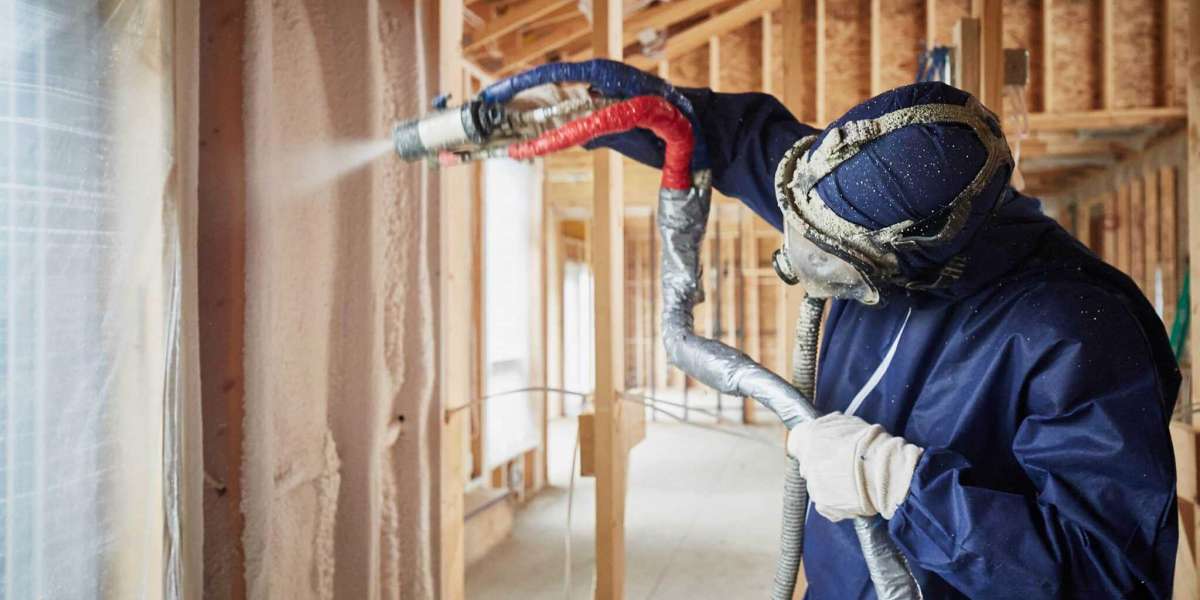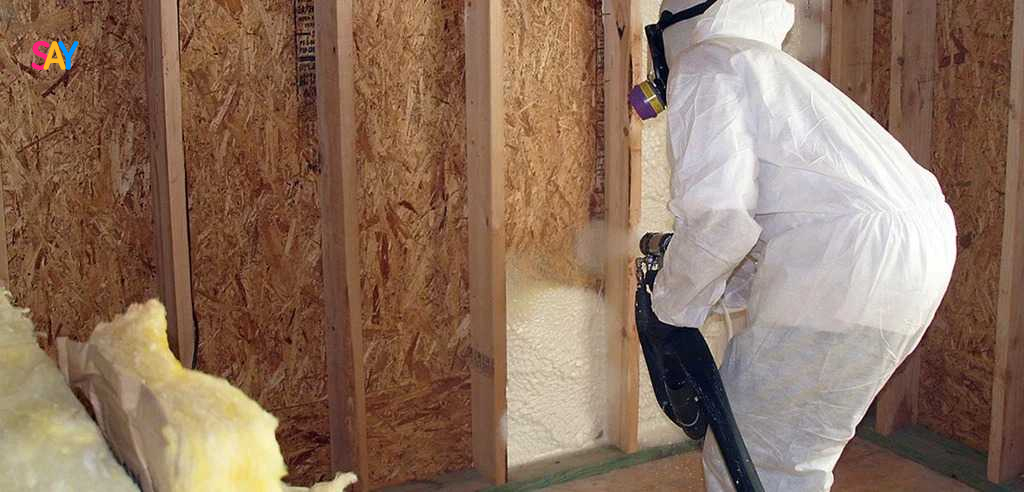When choosing between open-cell and closed-cell foam, it's important to understand how each performs in different insulation applications. Both types of foam offer benefits, but they excel in specific areas depending on the needs of your project. This guide will explore the characteristics, pros, cons, and key differences between open-cell and closed-cell foam to help you make an informed decision.
Types of Foam Insulation
Both open-cell and closed-cell foam are types of spray foam insulation, offering different levels of air sealing, thermal resistance, and moisture control. Each foam type is made from the same basic materials but has distinct physical properties due to the way the foam cells are structured.
Open-Cell Foam
Open-cell foam is made up of cells that are not fully enclosed, creating a spongy, flexible material. These open cells allow air and moisture to flow through the foam to some extent.
Closed-Cell Foam
Closed-cell foam is made of tightly packed cells that are completely enclosed, creating a more rigid structure. The cells are sealed, preventing air and moisture from penetrating the foam, which gives it a denser and more effective barrier.
Key Differences Between Open-Cell and Closed-Cell Foam
Understanding the major differences can help guide your decision based on the specific requirements of your insulation project.
Comparison Table
Property | Open-Cell Foam | Closed-Cell Foam |
Density | Lighter, less dense | Denser and heavier |
R-Value per Inch | Around 3.5 - 4.0 | Around 6.0 - 7.0 |
Water Resistance | Low; absorbs water | High; resists water infiltration |
Flexibility | Flexible and spongy | Rigid and strong |
Soundproofing | Excellent at reducing sound transmission | Moderate soundproofing benefits |
Application Areas | Interior walls, ceilings, attics | Basements, exterior walls, roofs |
Cost | Lower cost | Higher cost |
Installation Speed | Faster to install | Slower installation time |
Air Barrier | Provides some air sealing | Acts as a superior air barrier |
Things to Consider Before Making a Decision
Before deciding between open-cell and closed-cell foam, there are several factors to evaluate:
Climate and Location
Closed-cell spray foam insulation is typically the better choice for areas with high moisture exposure or extreme weather conditions, such as basements, crawl spaces, or exterior walls. Open-cell foam, however, is often sufficient for attics, interior walls, and areas that are not exposed to significant moisture.
Insulation Performance
If you're looking for superior insulation performance, closed-cell foam is the way to go. Its higher R-value per inch means it provides better insulation with less material. However, if you don't need such high performance and are working with a tight budget, open-cell foam can still deliver good results for lower-cost applications.
Space and Application
The physical properties of the foam matter for the application. Closed-cell foam, due to its density and rigidity, is great for situations where you need structural integrity or a moisture barrier. Open-cell foam, while not as structurally supportive, is ideal for soundproofing or where the flexibility of the material is required.
Budget Constraints
Open-cell spray foam insulation tends to be more affordable than closed-cell foam. If cost is a major consideration for your project, open-cell foam may be a more cost-effective solution while still offering good thermal insulation performance.
Environmental Factors
In some cases, the environmental impact and eco-friendliness of the foam can be a deciding factor. Both types of foam are available with environmentally friendly options, but it’s worth checking the product specifications to ensure you're selecting the best material for your eco-conscious needs.
Technical Specifications and Properties
For a clearer understanding, here are the technical specifications for both foam types.
Technical Data Table
Specification | Open-Cell Foam | Closed-Cell Foam |
Average Density | 0.5 - 1.0 pounds per cubic foot | 1.5 - 2.0 pounds per cubic foot |
Compressive Strength | Low to moderate | High; supports structural loads |
Thermal Conductivity | 0.030 - 0.035 W/m·K | 0.020 - 0.025 W/m·K |
Water Vapor Permeance | High (less resistance to water) | Low (resistant to water intrusion) |
Fire Rating | Class 1 (less fire resistance) | Class 1 (high fire resistance) |
Expansion After Application | Expands up to 120x its liquid volume | Expands up to 30x its liquid volume |
Things to Consider for Your Project
Performance Requirements
If your primary concern is moisture control and durability, closed-cell foam should be your choice. It's ideal for situations where water vapor or mold resistance is essential. Open-cell foam is better suited for interior insulation where air sealing and soundproofing are the main goals.
Air Sealing and Energy Efficiency
Closed-cell foam creates a tighter air seal, which can significantly improve the energy efficiency of your home. If you're aiming for maximum energy savings and improved temperature regulation, closed-cell foam is generally the better option.
Environmental Impact
While both types of foam can be environmentally friendly, closed-cell foam tends to have a larger carbon footprint due to its higher density. If environmental sustainability is a priority, you may want to consider the specific products' eco-friendly certifications or opt for open-cell foam.
Common Questions
How long does each type of foam last?
Both open-cell and closed-cell foam have a lifespan of around 80 to 100 years if installed correctly, though the durability may vary depending on environmental conditions.
Is closed-cell foam better for soundproofing?
Open-cell foam generally performs better in soundproofing due to its spongy nature. It’s great for reducing noise transmission between rooms.
Can I use open-cell foam in a basement?
Closed-cell foam is the preferred option for basements due to its moisture resistance. Open-cell foam may absorb water, leading to potential issues over time.
Does the higher R-value of closed-cell foam justify the cost?
The higher R-value of closed-cell foam means better insulation with less material, potentially lowering energy costs in the long run. If energy efficiency is your priority, the higher upfront cost can be worth it.
FAQ
What is the best foam for attics?
Open-cell foam is often the best choice for attics because it provides effective insulation and allows moisture to escape, preventing mold growth.
Can I use open-cell foam in exterior walls?
Closed-cell foam is better for exterior walls due to its water-resistant properties, which are important for preventing water infiltration and mold growth.
Does open-cell foam provide a better air barrier?
While open-cell foam does offer some air sealing, closed-cell foam provides a superior air barrier, making it the ideal choice for high-performance insulation needs.
Is closed-cell foam worth the extra cost?
If you need higher insulation performance, moisture resistance, or structural support, closed-cell foam can provide long-term value, making it worth the extra cost in many cases.
Make the Right Decision
Choosing between open-cell and closed-cell foam insulation contractor requires careful consideration of your specific needs, climate, and budget. Closed-cell foam excels in areas requiring high R-values, moisture resistance, and structural integrity. On the other hand, open-cell foam offers a flexible, cost-effective solution for interior insulation, soundproofing, and applications where moisture isn’t a major concern. Evaluate your priorities and make the decision that best aligns with your project goals and long-term needs.






